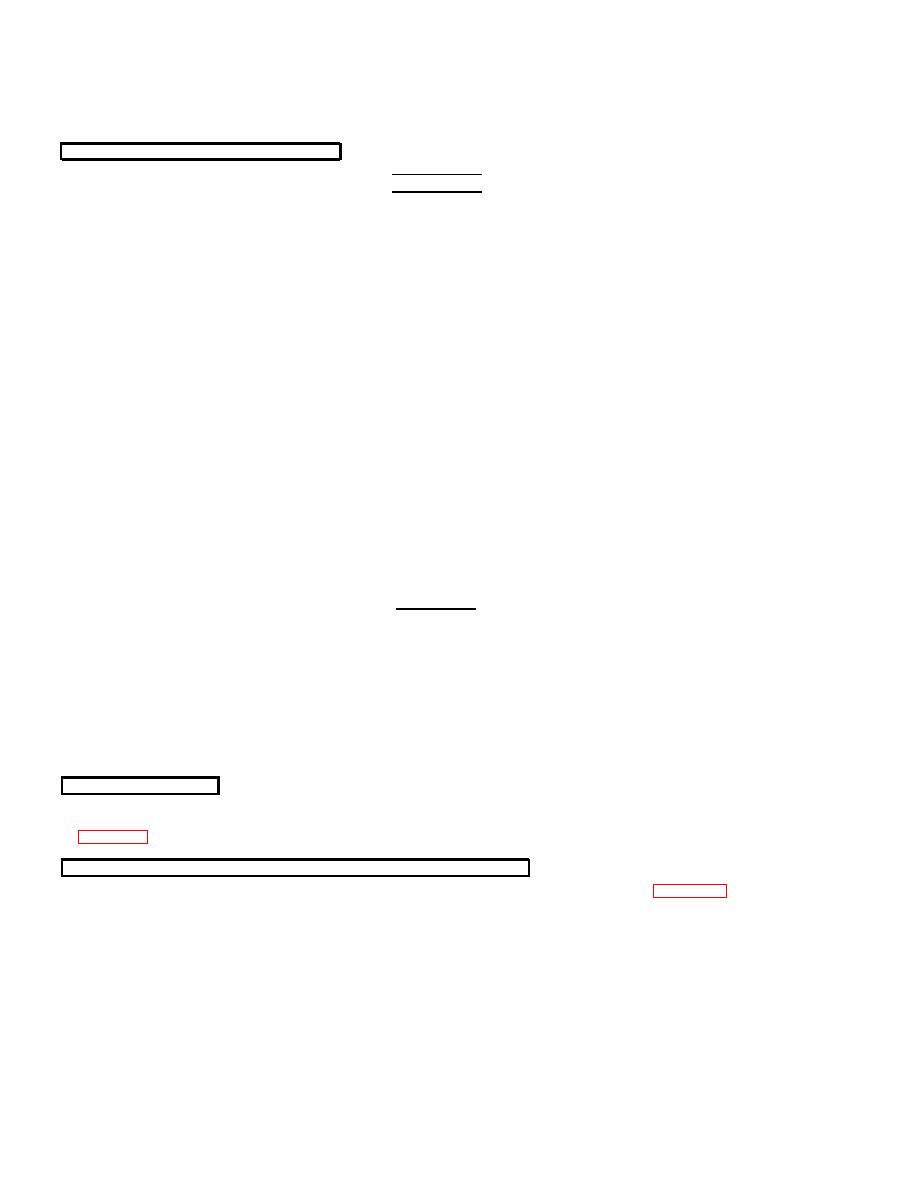 |
|||
|
|
|||
|
|
|||
| ||||||||||
|
|
 TM
9-2320-279-20-1
Maintenance Procedures (Cont)
2-21. CLEANING PROCEDURES.
WARNING
Adhesives, solvents, and sealing compounds can burn easily, can give off harmful
vapors, and are harmful to skin and clothing. To avoid injury or death, keep away
from open fire and use in well-ventilated area. If adhesive, solvent, or sealing
compound gets on skin or clothing, wash immediately with soap and water.
a. When cleaning ball or roller
bearings, place in a basket and suspend in container of dry cleaning
solvent, (Item 47, Appendix C). If
necessary, use brush to remove caked grease or chips. Avoid rotating
bearings before solid particles are
removed to prevent damaging races and balls. When bearings have been
cleaned, spin immediately in light
lubricating oil (Item 30, Appendix C) to remove solvent.
b. Do not clean preformed packings or other rubber parts in dry cleaning solvent. Wipe clean with
clean, dry, lint-free cloth.
c. Before disassembly of vehicle, clean exterior parts of vehicle thoroughly with dry cleaning solvent
(Item 47, Appendix C) to remove accumulated mud, tar, and grease.
d. For exterior cleaning of frame and structural components, use cleaning compound (Item 12,
Appendix C), in a solution as recommended on the container. Leave application on item surface for
approximately 10 minutes before rinsing. Rinse with hot or cold water under pressure. If available, use hot
water under 80 to 120 lb (36 to 54 kg) pressure. An ordinary garden hose with nozzle may be used if other
equipment is not available. Rinse thoroughly. If pressurized water supply is not available, wash painted
surfaces of vehicle with solution of 1/4 cup of soap chips (Item 45, Appendix C), to one gallon of water.
e. Electrical parts such as coils, connectors, switches, and insulated wiring should not be soaked or
sprayed with cleaning solutions. Clean these parts with clean, lint-free cloth moistened with dry cleaning
solvent (Item 47, Appendix C).
CAUTION
Do not use gasoline, diesel fuel, or other petroleum base products to clean or
preserve hydraulic system components. Use of petroleum base products can
change the lubricating quality of hydraulic oil and cause failure or damage to
equipment.
f. When cleaning hydraulic system components, use petroleum-free solvents. Clean and dry parts
thoroughly to make sure no residue remains. If preservative coating is required before reassembly, apply
light film of preservative oil, Military Specification MIL-H-6083D (Item 35, Appendix C). If petroleum-free
solvents are not available for cleaning, use hydraulic fluid compatible with that used in the vehicle system.
Instructions for preparation of material for painting, how to paint, and material to
be used are in TM 43-0139. Instructions for camouflage painting are contained in FM 5-20. Stenciling and
marking military vehicles are called out in TB 43-0209. Data plates location and description are referenced
in para 1-10.
2-23. REMOVAL AND DISASSEMBLY OF COMPONENTS.
b. Ensure that adequate clearance is available for removal of the component. Disassemble the vehicle
to the extent necessary to provide adequate working clearance.
c. Use chain hoist, jack, or other aid when lifting heavier components. Lifting device should be
positioned and attached to components to remove all strain from mounting hardware before last hardware
is removed.
|
|
Privacy Statement - Press Release - Copyright Information. - Contact Us |